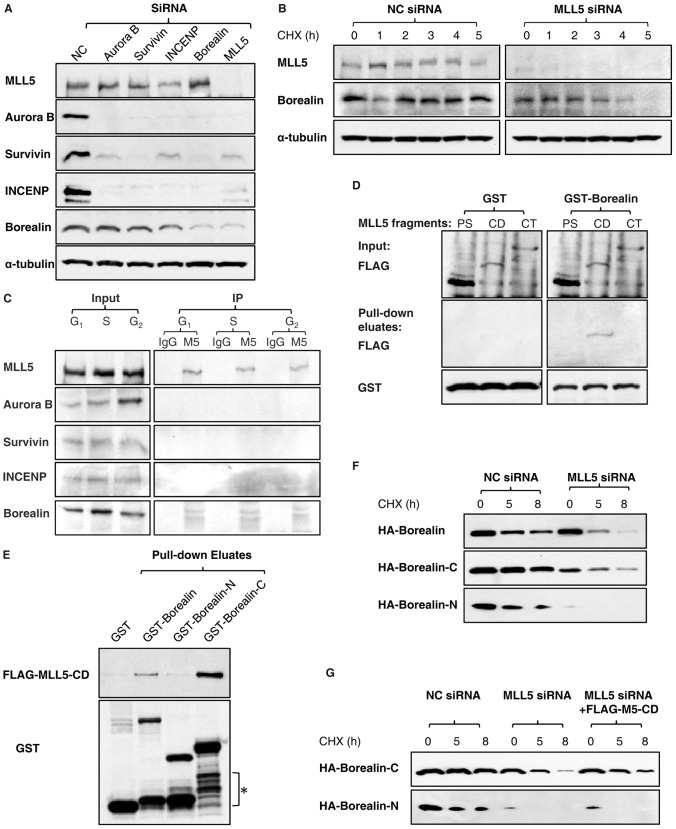Fig. 4.
MLL5 interacts with Borealin and maintains the stability of Borealin. (A) U2OS cells were transfected with CPC-siRNA or MLL5-siRNA and synchronized to M phase with nocodazole. The protein expression levels of Aurora-B, Survivin, Borealin, INCENP and MLL5 were analyzed by western blotting. Tubulin served as a loading control. (B) The stability of Borealin in NC-siRNA- and MLL5-siRNA-treated cells was compared by western blotting. CHX, cycloheximide. (C) A co-immunoprecipitation study revealed an association between MLL5 and Borealin. (D) A direct interaction between the central domain of MLL5 and the C-terminus of Borealin was established in in vitro binding assays. PS: N-terminal region containing PHD (plant homeodomain) and SET[Su(var)3-9, enhancer-of-zeste and trithorax] domain, aa 1-572; CD: central domain, aa 562-1150; CT: C-terminal domain, aa 1113-1858. (E) A GST pull-down assay demonstrated that the C-terminus of Borealin was required for the interaction with MLL5. The asterisk denotes the degradation of GST-Borealin and its mutants during induction. GST-Borealin-N: aa 1-120; GST-Borealin-C: aa 121-280. (F) The stabilities of HA-Borealin, HA–Borealin-C and HA–Borealin-N were compared in NC-siRNA- and MLL5-siRNA-treated cells. (G) Overexpression of FLAG–MLL5-CD significantly stabilized HA–Borealin-C in MLL5-depleted cells, but failed to rescue the degradation of HA–Borealin-N.

